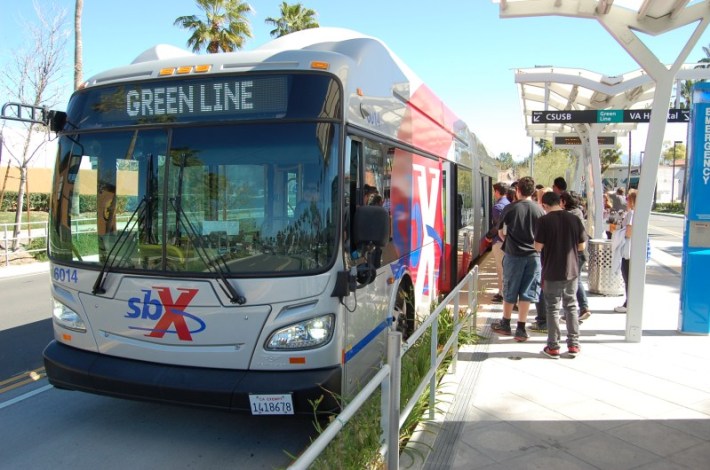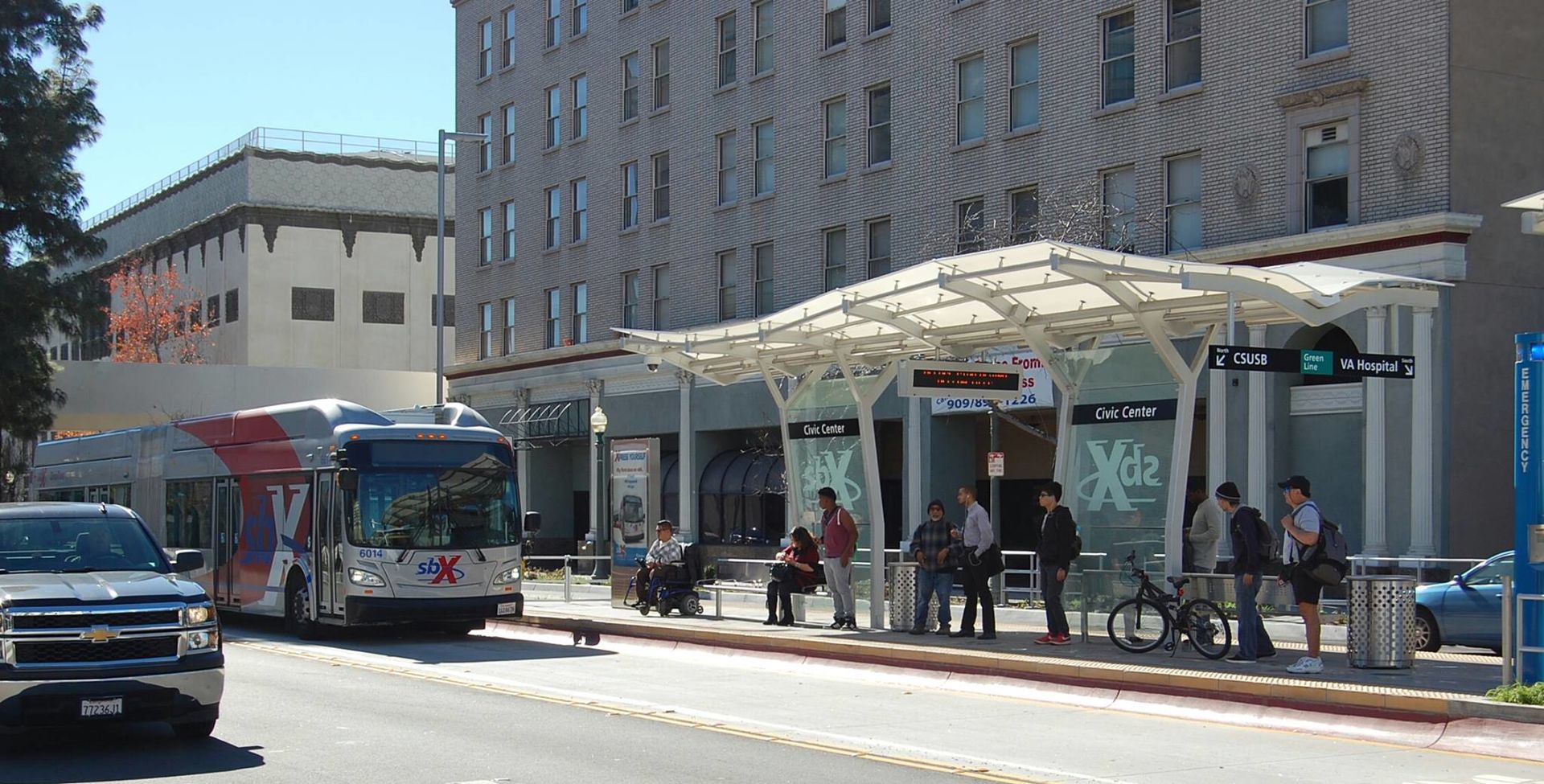Yesterday, the Metro board approved a motion directing staff to report back on the potential for the agency to operate buses with left-side boarding. Metro has been been reluctant to utilize both side bus boarding as it would, per the motion, introduce "operational and maintenance complexity into the bus fleet." The motion directs Metro staff to report back on left-side boarding in February 2021.
The motion was authored by L.A. City Councilmember Mike Bonin, who has been instrumental in efforts to improve Metro bus speeds, and fellow boardmembers Hilda Solis, Ara Najarian, Paul Krekorian, and Sheila Kuehl.
Left door boarding is not uncommon in effective Bus Rapid Transit projects in North America.
Prominent examples include the Cleveland Health Line, the Indianapolis Red Line, and Albuquerque ART. Closer to home, left-side boarding has been successful on San Bernardino Omnitrans sbX, and Oakland's Tempo BRT. These center-running lines speed up buses by getting them away from the crowded curb lane. Left-side boarding enables BRT stations to operate similar to rail platforms.
Left-side boarding would give Metro greater flexibility in planning for new high-profile Bus Rapid Transit (BRT) lines, including Vermont Avenue, North San Fernando Valley, and North Hollywood to Pasadena. In theory these lines should emulate rail lines; in practice they are too often designed to run in curb lanes where they get bogged down in conflicts with parked cars, turning drivers, and cyclists.
Eagle Rock resident Michael MacDonald is, alongside Equitable Eagle Rock, advocating for BRT on Colorado Boulevard with a design that fosters transit ridership, walking, and bicycling. In an email to Streetsblog, MacDonald expressed support for left-side boarding, stating, "The ability to board efficiently from a central platform could be a game changer for Metro projects on streets that have existing medians such as the North Hollywood-Pasadena BRT and the Vermont Transit Corridor projects." MacDonald hopes "that Metro will take this study seriously and look at how modernizing its fleet with BRT-type buses can improve the quality of ongoing projects, but also existing service on the Silver Line and other bus lines throughout L.A. County."
At yesterday's board meeting, County Supervisor Hilda Solis similarly stated that left-door boarding might be useful for NoHo-Pasadena BRT on Colorado Blvd.
Bonin acknowledged that "The idea for this motion came from transit advocates looking at our various BRT projects and noticing that our designs tend to be more constrained than similar projects in other cities." He stated that with "more BRT projects in the pipeline than at any other point in Metro’s history... we should look at every opportunity to make our projects better."

While left-side boarding can be important for higher-profile and bigger-budget BRT projects, there are cheaper and quicker ways to improve bus speeds.
Most Metro bus lines don't need left-side boarding.
(And not all center-running BRT needs left-side boarding; The Bronx's Edward L. Grant Highway project is a right-side boarding center-running busway - and that project included bike lanes. It's a matter of what agencies choose to prioritize within limited roadway space.)
From downtown L.A. (5th Street, 6th Street, and Aliso Street) to Boston, Chicago, and San Francisco, during the pandemic agencies have opened many miles of much-needed low-cost quick-build bus lanes. In a recent panel discussion, TransitCenter's Hayley Richardson stressed that “buses have been the work horses of the pandemic,” as they carry more essential workers, buses have seen less ridership loss than rail. Essential workers need Metro to push past reports, and get more of these types of quick-build improvements on the ground.








